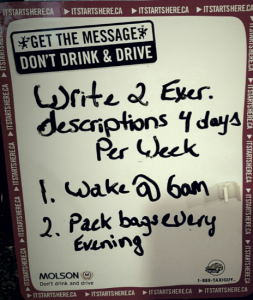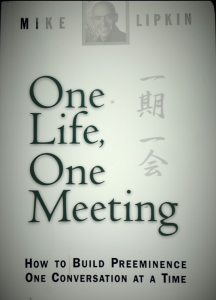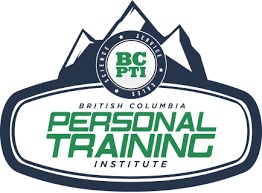At BCPTI our instructors are constantly looking for ways to help students recognize the gaps in current best practice tactics, and then give them the gap removing tools to create success in their new career endeavors. Training engagement is something we stress constantly with our trainers & students. Why is engagement so important? Engaged = involved, active participation. Personal Training research shows that involved people are generally happier, more productive and take more pride in the task at hand. Before we play problem-solution, let me ask you 2 simple questions:
- Would you rather be serviced by someone who A: takes pride or B. less pride in the service they are providing to you?
– Without client engagement, you will have a hard time leading them to successful goal achievement and behavior modifications. You will also have a tough time retaining them as client’s. Sadly, a lot of service providers are not engaged. This is one of my top ways “No-no’s” for personal training engagement.
- Which training session or shift goes by faster and feels more fun? A training session when you A:. keep yourself constantly involved in the session via cuing & drills or B: when you quickly demonstrate an exercise, count reps and watch the client sloppily perform your training program?
If you take pride in your work, the answers should be rather obvious.
Problem: Professional opinion & goals. The best training program & fitness advice (i.e. your professional opinion) is useless if no one is using it. We ask client’s what their goals are, but rarely ask them what exercises and activities they like or even think to put those actives into their training programs. Unfortunately, we additionally rarely hold them accountable to their goals.

Solution:
– The best way to achieve alignment (i.e. get your client to do what you believe is needed to reach said goals), especially early in the relationship, is to ask for and validate their opinion. So, talk less & ask more questions similar to “what do you like” “what do you enjoy” & be certain to put some of their favorites into their training regime.
– To create accountability and help you with follow-up (i.e. #7 below), have the client write their goals down, specifically in a place where they can see them every day (i.e. bathroom mirror). Below, have them write 2 behaviors that collectively you have decided will help them achieve their goals.
– For the first 2-3 weeks, every time your client actions the goal driven behavior, they tend to message you. If you haven’t heard from them in 2 or 3 days send them a message of encouragement to follow up. If need be, every Sunday or Monday review your files and be certain to know each client’s goal and behavior, then follow up with them!
Problem: Lack of preparedness. All too often I see trainers out of distinctive uniform, without a program or tracking mechanism, scrambling for equipment, working in a messy environment and making programs up on the fly. I can’t even begin to explain how ridiculous this professional standard of care is. Goals without a plan are rarely met, goals without accountability are rarely achieved, and goal attainment without purposeful practice is like throwing darts blindfolded, hoping you will hit the bullseye.
Solution:
– The biggest perceived issue here is time. We all know it’s laziness and lack of pride, but let’s ASSUME it’s time. Solution? Time-manage it. Put aside 3-4hr per week for programming. If you are new to PT this may be an hr. / day. If you are passionate about achieving results, take personal pride in your work and this ‘time’ will not be an issue.
Solution:
– arrive & set-up early. Look at your schedule and set-up equipment for 2 clients at a time. I personally avoid the use of major equipment. This allows me to predict equipment availability. Therefore, I only need a plan and space to train my clients.
Problem: Remove your distractions. That damn cell phone. Your whole life is there, so of course it’s going to nudge you as you attempt to engage your clients. Solutions to problem #4 do not work unless you also remove the outside world. Your phone is not required as a timer & your phone isn’t paperless programming. But if it is….

Solution:
– put it on flight mode.
– Buy a cheap stand for it. I personally have a cheap tablet that I use specifically for this reason. You can find an old generation iPad or Galaxy for a less than the cost of 3 Starbucks Americanos, and guess what, they have perfectly good timers on them. You can even download a FREE App that has a round timer on it. I also have a cheap speaker which dings like I am in a boxing match throughout. Ding & green means go, ding & red means rest.
– Trainers have outside lives as well. Engaged corrective cuing, tactile training as well as partnering with your client can keep you out of your head into the game of providing high quality service.
Problem: Doesn’t greet the client as soon as they arrive. I personally am guilty of this one, but 100% know better and realize it needs to be improved. That first moment is essential to each and every client relationship. If you want to learn the importance and art of this, read the book, “One Life, One Meeting” by Mike Lipkin. It will change the way you try to create relationships.

Solution:
– if you’re not 5 min early, you are late. This is a common sport saying amongst coaches. Find a way to ready for your client ahead of time. If you are running back to backs, at least be aware they are entering the space, give them a huge smile, wave and say their name. “Jane, I am just finishing up, but I am pumped for our training session today”. Don’t just say it, do it such that everyone knows Jane walked into your personal training community.
Solution:
– It cost less than .25cents per client to leave a bottle of water at the front desk. Have the front desk hand your client’s their bottle of water when they check in for their PT session. In fact, it can be anything, a hand written inspirational quote, a pre-workout or electrolyte drink sample. Get creative – be awesome!

Problem: Uninspired warm-ups. Many trainers like to have their clients perform their own warm-ups via cardio machine & half assed dynamic warm-ups. This is a huge mistake for numerous reasons including; poor tissue prep, poor nervous system engagement & lower than required intensity. Beyond the physical, one of the major goals of a trainer is to help their client’s leave life behind for an hour.
Solution:
– I have played sports my whole life. When I played competitive hockey, during the game, it was your line mates and coach (nothing else mattered); I never had a clue who was in the audience and couldn’t care less what my boss or girlfriend were doing at the moment. As a trainer, the warm-up needs to be fun and engaged, both physically and cognitively. The quicker you can help your client leave the outside world behind, the more likely you are to push them outside their comfort zone and seeing a huge psychological benefit to that 1 hr with you. Meditation comes in many forms – turn fitness into a focused sport like environment; your clients will love and look forward to it.
Solution:
– Have your client play their favorite pump me up jam or motivational podcast while driving to the workout #gamechanger
Problem: Lack of physical connection & cuing with the client. This definitely is part of my engaged warm-up solution, but it’s a pervasive theme throughout the entire workout. Trainers due to their PT credential restrictions, organizational position statements, or personal fear of lack of knowledge don’t use cues and hands-on training. Tactile sensation has been proven to improve proprioception & all forms of emotional connection between human beings.
Solution:
– Appropriate tactile training is a huge opportunity to engage your client’s muscle-mind connection and therefore improve their movement quality. When using tactile cues, apply light but firm pressure and directionality. Move the hands in the direction you want your client to move the joint. Place your hand and apply light pressure eccentrically to create muscle recruitment & tension.
Solution:
– use all forms of cuing, demonstrate exercises (visual), use consistent word cues (auditory) and use your hands to as described above (tactile).
Problem: Lack of Follow-up. Busy trainers often lose sight of this frequently. More sessions do not equal more quality. Train as many people as you can engage and follow-up with weekly.
Solution:
– Praise them on an awesome effort, any behavior or improvement that is in alignment with them achieving their goals, give them a behavior reminder. Honestly, the sky is the limit here.
Solution:
– whenever possible, provide them with resources. This could be educational articles you’ve read, web links, referral contacts, take away programs and monthly calendars you have created together. If you not seen client’s in a while these resources are a great reason to touch base – I mean remind them you are always watching.
Solution:
– If you have a lot of clients, create a group. I have an education group on FB and my small group clients are added there. You can do the same for PT etc. When it’s a group, acknowledging any member generally triggers multiple responses from other members. Now you are no longer the only giver of praise #passthetorch. Note: It can also be a text group or other social media outlet.
At the end of the day, your job is to find ways to make them do what is needed to achieve the goals you have set together. And, beyond the leadership aspect of this is how to create a focused engaged training session. One of the reasons client’s purchase PT is to receive the motivation to help them achieve changes in their function, performance, lifestyle and body composition; changes they have either unsuccessfully attempted on their own, have no idea how to achieve or simply can’t motivate themselves to do.
Be the best you can be!







Leave A Comment